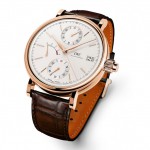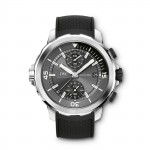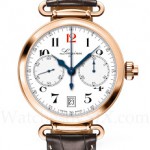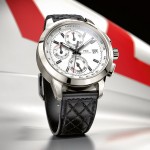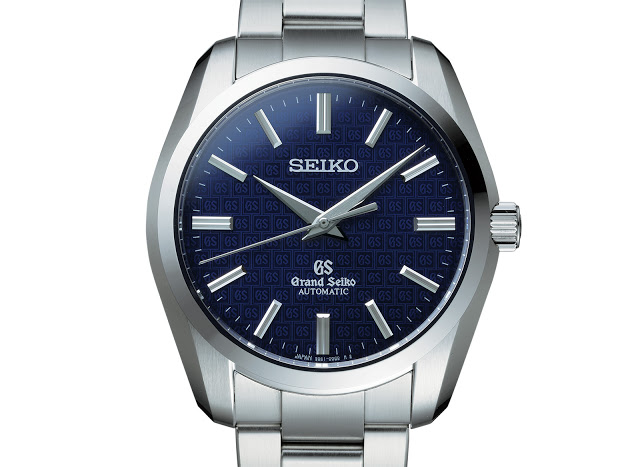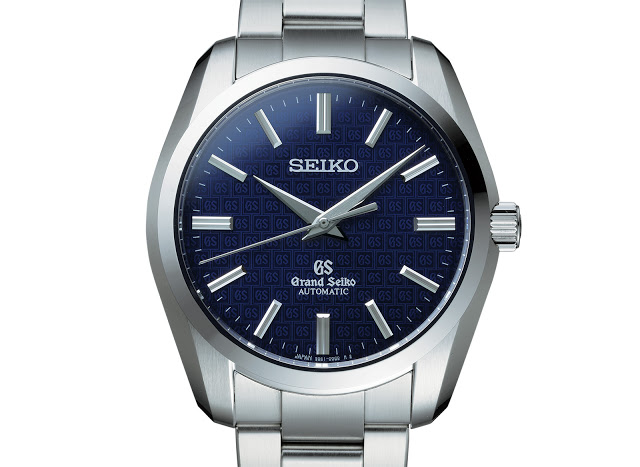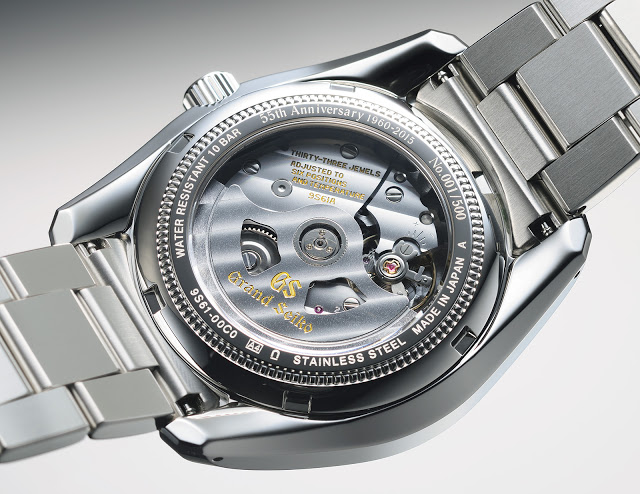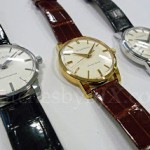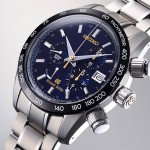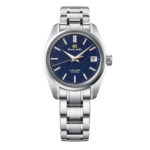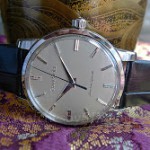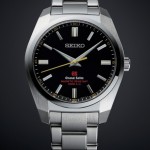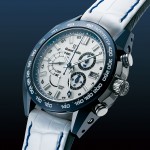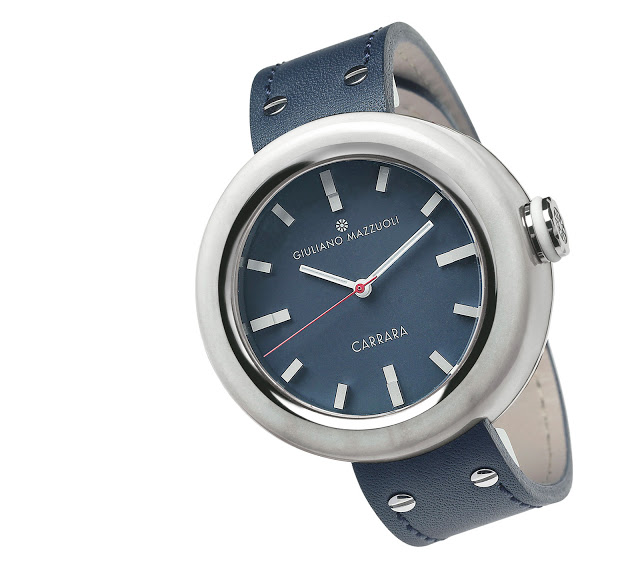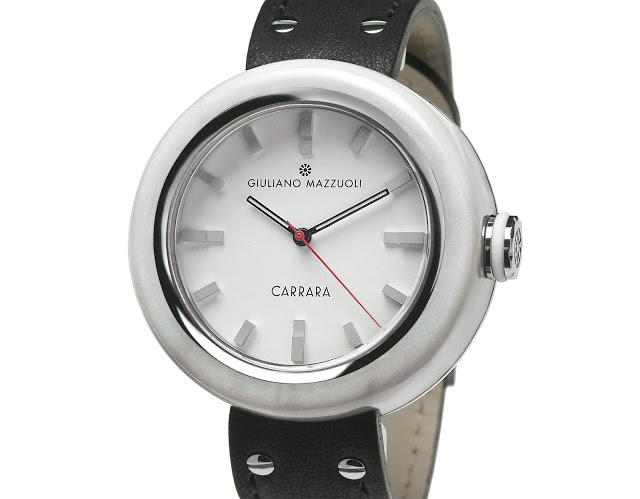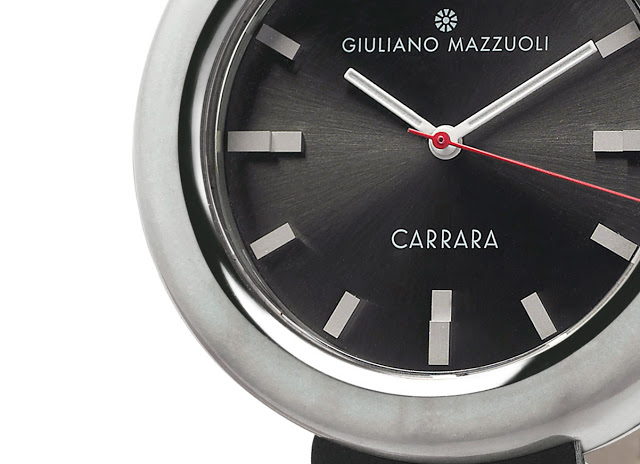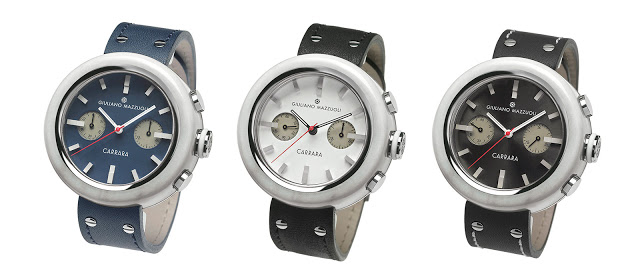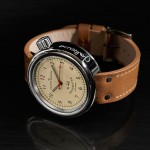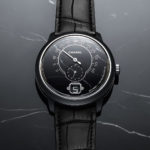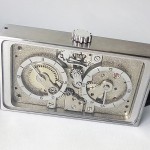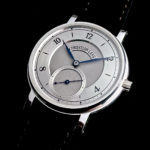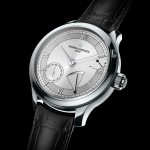A Look at the First Ever Monopusher Chronograph from IWC (Review, Original Photos & Pricing)
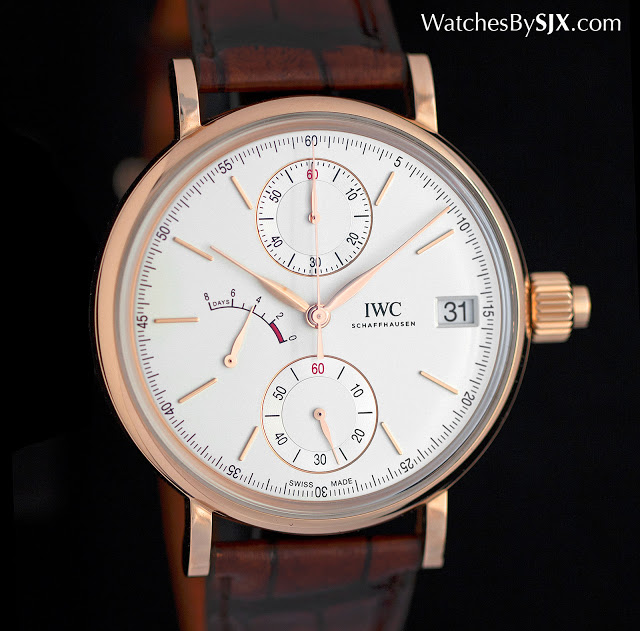
A large but slim single-button chronograph, the IWC Portofino Hand-Wound Monopusher Chronograph is equipped with a brand new movement featuring a smartly designed, compact chronograph mechanism.

The Portofino Hand-Wound Monopusher Chronograph is the latest from IWC and its first ever single-button chronograph. Fittingly for a brand that has long emphasised good engineering, the movement is an admirable feat of concise watchmaking, with the entire chronograph mechanism packed into a small area just just 1mm high. Chronograph mechanisms typically take up a lot of space because of all the gears needed for each of the chronograph registers. Traditionally constructed chronograph movements like the Patek Philippe CH 29 and Lange Datograph are good examples of this. But the new calibre 59360 manages to do it in a relatively narrow space. Getting there took a long time, with the launch of the watch having been delayed almost three years. Seen from the back, the chronograph mechanism is underneath a large bridge that occupies the top third of the movement. The visible components of the mechanism are wide and flat, helping to keep its overall height down.
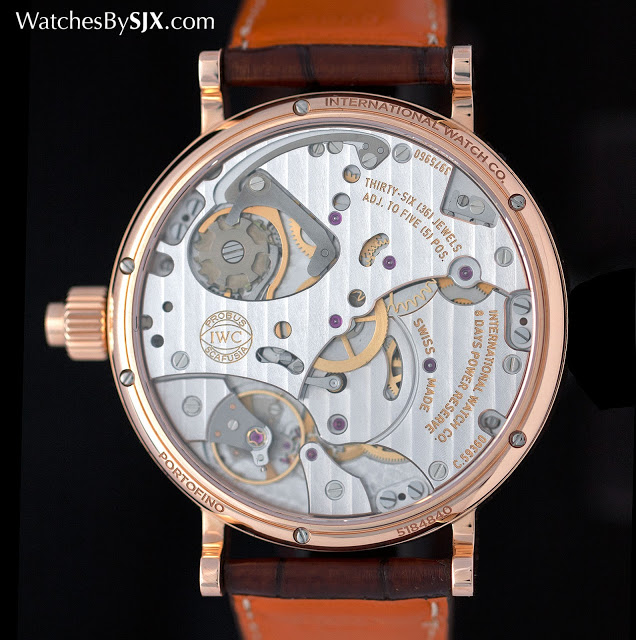
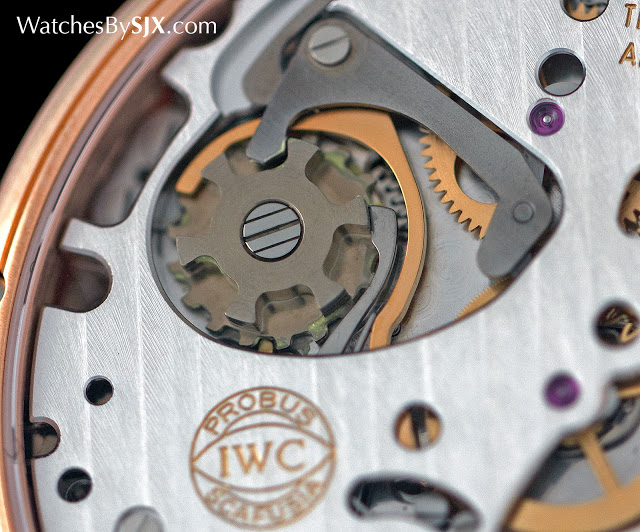 |
| The column wheel that functions as an on-off switch for the chronograph |
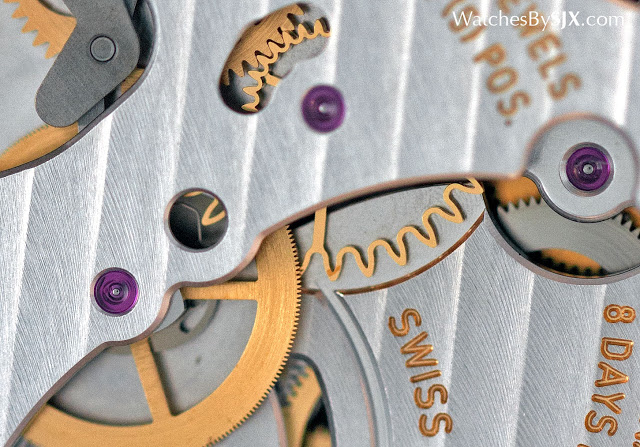 |
| The skeletonised gears made by UV-LIGA partially visible |
Because the chronograph mechanism is situated only on the top third of the movement, so are the counters on the dial. The 60 minute counter is at 12 o’clock, while the elapsed seconds is in the centre (the seconds at six is constantly running).
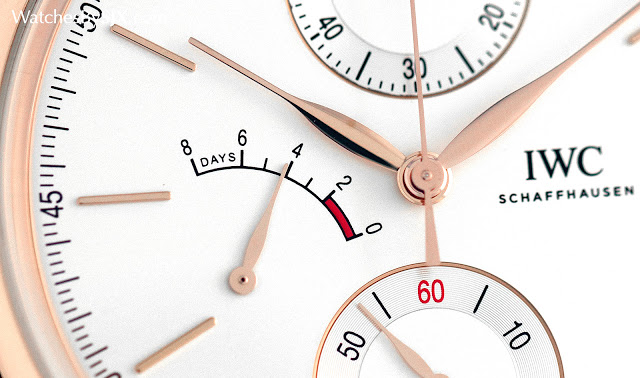 |
| The power reserve is at nine o’clock |
The rest of the movement is identical to the hand-wound calibre found in the Portugieser Hand-Wound Eight Days and Portofino Pure Classic. Fully wound it runs for eight days, possible thanks to a large barrel and a smallish balance wheel, so the movement consumes little energy when running. Though the construction of the chronograph is admirably clever, the movement is wide and flat, lacking the visual appeal of IWC’s flagship calibre, the 52000 in the Portugieser Automatic 7-Days and Perpetual Calendar. Like other IWC movements, the finishing is attractive but done entirely by machine.
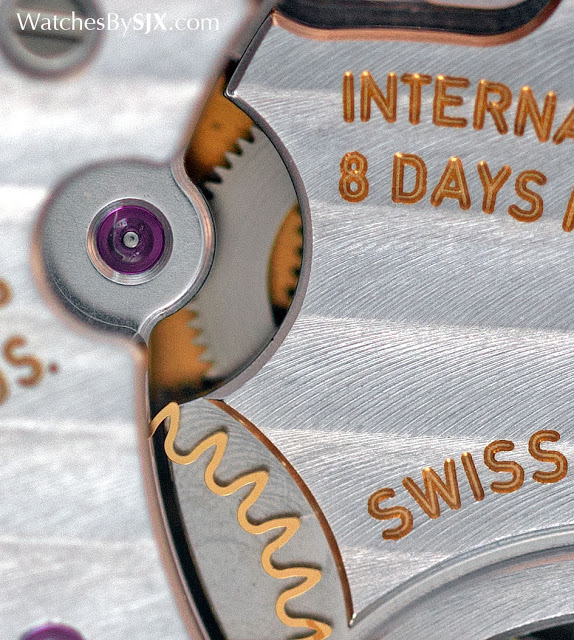 |
| The razor sharp edges of the bridge and the deep lines of the Geneva stripes point to mechanical application |
The Portofino Hand-Wound Monopusher Chronograph is 45mm in diameter, and 13mm high. Like the other watches in the Portofino line, the chronograph is fitted on alligator leather straps made by Italian shoemaker Santoni. They are finished with an antique-look patina for that Italian style that the Portofino is meant to represent (and something chief executives Georges Kern alluded to in our recent interview).
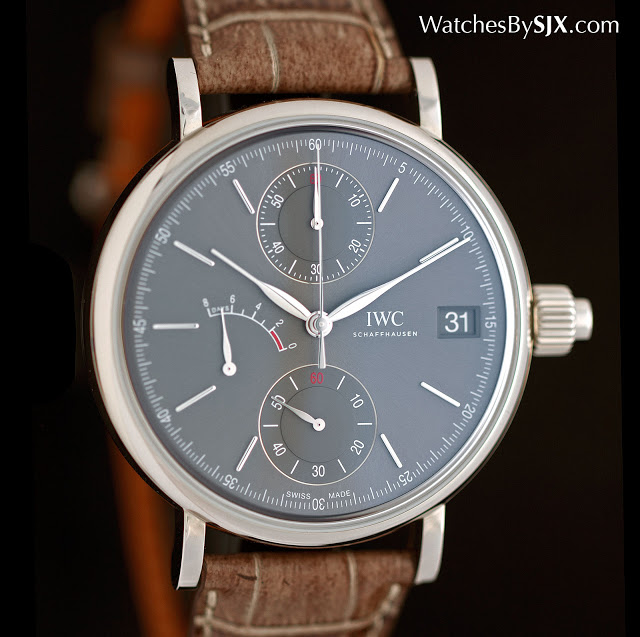
The Portofino Hand-Wound Monopusher costs US$27,100 or S$38,900 in white gold, and US$25,400 or S$36,900 in red gold.


